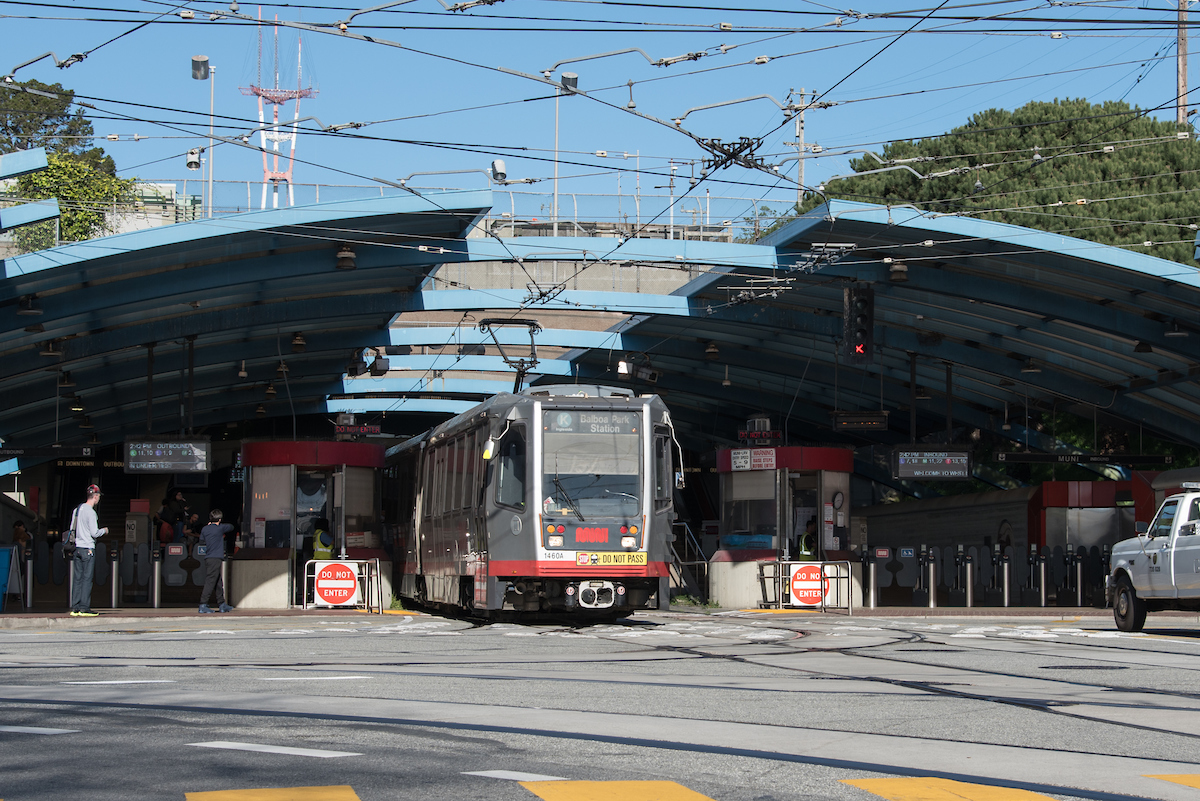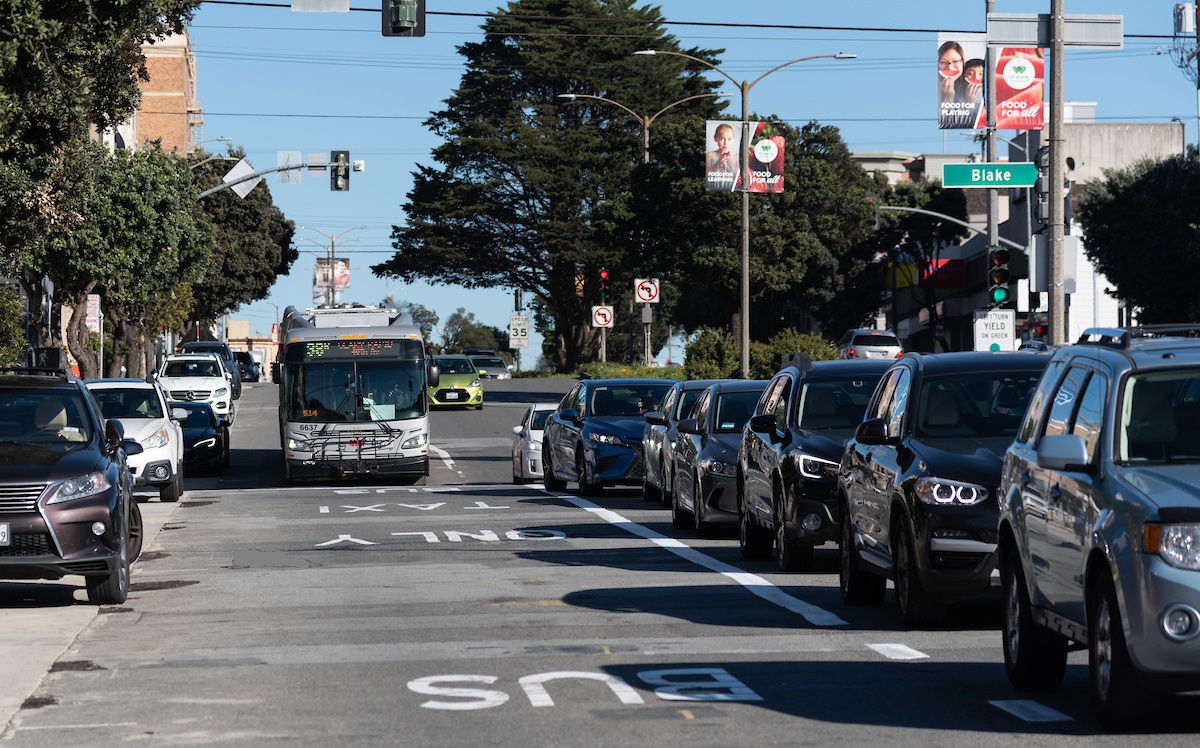Kremlin Claims It Busted Neo-Nazi Terror Plot in 9 Cities















































The K Ingleside exiting the subway at West Portal
On April 16, the SFMTA, along with Mayor Breed and District 7 Supervisor Myrna Melgar, announced that Muni’s K Ingleside trains will return to the westside starting May 15.
The return of these trains is happening much earlier than anticipated thanks to the hard work of SFMTA staff to find creative solutions to ramp up Muni service to riders and support the city’s economic recovery.
“This addition of Muni service is a true testament to the collaboration between Muni staff, our labor unions and community partners,” said Julie Kirschbaum, SFMTA Director of Transit. “We know that key transit connections are critical to the city’s economic recovery, and we’re thrilled to re-open the subway and ramp up service.”
The K Ingleside will join the previously-announced N Judah as part of Muni Metro’s reopening, highlighting the agency’s commitment to maximizing transit access citywide. Recent subway repairs enable the K Ingleside to be interlined with the T Third line and run through a much more reliable subway system.
The pandemic enabled us to accelerate other upgrades and necessary maintenance work, provided by a rare, extended subway shutdown. These are part of the Subway Renewal Program, a systematic approach to upgrades over the next 10 years that addresses both longstanding issues predating the pandemic and other issues uncovered since the shelter-in-place began.
Key improvements include:
The return of K Ingleside rail service is only one part of a larger roll out of Muni Metro rail updates happening May 15:
K Ingleside/T Third
K Ingleside and the T Third will once again be “interlined.” This means that the two routes will operate as one route, from Balboa Park to Sunnydale, providing subway service at all stations from Embarcadero to West Portal.
N Judah
The N Judah is also returning to rail service. Riders will have more room and fewer pass ups, as the two-car train increases the N Judah’s capacity.
J Church, L Taraval and M Oceanview
These lines will all continue to operate as they currently do, though the increased capacity on the K/T trains will soon provide even better connections for those traveling downtown or to the western neighborhoods.


The 38 Geary Temporary Emergency Transit Lane
Muni is a core part of our community’s urban fabric that, like so much, has been upended by the pandemic. Yet, as hard as the last year has been, the SFMTA is focused on bringing Muni back better than ever. As we shift to focus on recovery, we’re looking closely at the emergency efforts we’ve implemented during the pandemic and how their proven effectiveness can help support San Francisco long-term.
This includes promising performance data from our Temporary Emergency Transit Lanes program and plans for service restoration and future improvements. As part of an emergency response over six miles of temporary emergency transit lanes have been installed, benefitting tens of thousands of Muni customers each day, and helping to protect key Muni corridors from traffic. With the prioritization of temporary emergency transit lanes on routes that serve neighborhoods identified by the Muni Service Equity Strategy, the goal is to protect low-income and historically underserved people traveling on Muni from traffic congestion as the economy reopens and traffic returns.
Recent Muni Forward improvements are working: where we have invested in improvements like transit lanes, transit signal priority and bus bulbs, Muni customers are experiencing quicker and more reliable trips. When more people choose Muni because it’s fast and reliable, there are fewer cars on the street, reducing traffic congestion and greenhouse gas emissions.
Temporary Emergency Transit Lane Program Benefits Riders
Several transit lanes have already been in place long enough to collect substantive data, and the results are showing benefits to Muni riders. The success of these corridors - Geary, 4th Street Bridge, 7th and 8th Streets and Mission Street in SOMA – show how beneficial making investments in transit can be.
Here’s a quick run-down of each of their successes.
Mission Street in SOMA was our very first Temporary Emergency Transit Lane project and it is showing amazing results. The project took rush hour-only transit lanes and made them full-time. Here’s what we’ve learned:
A 2-week online open house will be held Monday, April 19, through Monday, May 3, to inform the community of the outcome of the evaluation of the temporary project, and changes made based on feedback, prior to pursuing permanent legislation in June. For more information, visit SFMTA.com/TempLanes14.
Geary Boulevard (Richmond District)
Building upon the implementation of the Geary Rapid Project in the eastern half of the corridor, Geary Boulevard west of Stanyan is benefiting from new temporary emergency transit lanes, Muni head start signals and wooden bus bulbs. The data shows:. The data shows:
T Third riders have long experienced delays near 4th and King Station – in front of Caltrain. New transit lanes on the 4th Street bridge, however, are showing real promise.
Serving the 19 Polk, much of 8th Street and a smaller slice of 7th Street received temporary emergency transit lanes early in the pandemic. In fact, the project has been so successful, we have rerouted the 27 Bryant over to 7th and 8th in SOMA to take advantage of the time savings and improve reliability for the entire line. On this corridor, we’re seeing:
As the city reopens and traffic returns, temporary emergency transit lanes are being evaluated on their effectiveness with the goal of making the benefits of the temporary emergency lanes permanent.
Future Service Improvements
The benefits to Muni through the success of the temporary emergency transit lanes projects need to be protected. The success of the program is encouraging the SFMTA to pursue permanent changes along several of these corridors. Importantly, any long-term changes will incorporate public feedback to tweak the designs to better match emerging neighborhood needs. Making the Muni benefits we have seen through the Temporary Emergency Transit Lanes program permanent is one way that we can emerge from the pandemic stronger than before.
Legislation for permanent transit lanes on Geary and Mission Street in SoMa is under consideration.
In addition, two more temporary emergency transit lanes projects are being considered for approval by the SFMTA Board of directors today:
Finally, we’re taking advantage of the current environment to advance major construction projects that will deliver long-planned (and long-delayed) improvements.
These include:
All of these will add up to very real improvements for transit riders. If you want to learn more, check out this presentation prepared for the April 20, 2021 meeting of the SFMTA’s Board of Directors.






































